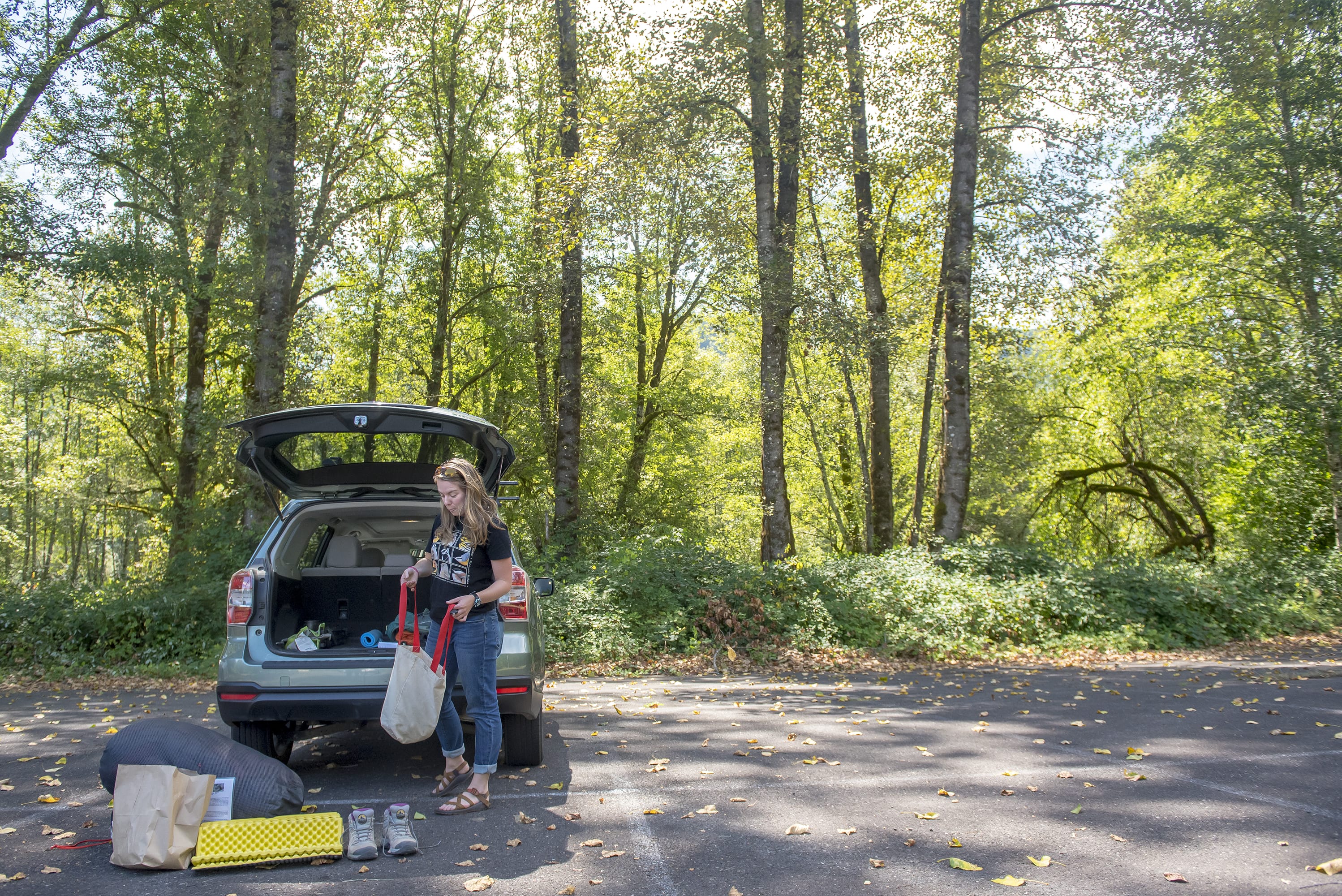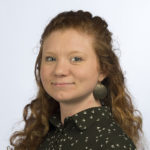AMBOY — The scene at the Mount St. Helens Institute around noon Aug. 23 was a bit of a frenzy.
Coolers and food supplies were strewn across the driveway of the unassuming building along Northeast Yale Bridge Road in rural Amboy as employee Sarah Croston and a few others prepared for a three-day sojourn on the mountain.
Dust-coated from regular drives up to the institute’s field camp near Windy Ridge, a blue-green Chevy Suburban’s (called the ‘burban for short) back hatch was open; visible items included a 3-pound tin of coffee, a box of pancake mix and an unknown amount of Clif Bars.
Croston knows the mountain well. In the two weeks prior, she had summited it five times. It is her job as an assistant guide for the institute, which was founded the year she was born, 1992.
“Last week, I was up there for the sunrise summit,” Croston said. “There was this really thick cloud layer, and the sun was coming up over (Mount) Adams. It was beautiful.”
A Maine native, Croston started at the institute in 2015 as an educator after bouncing around the U.S. in various roles: handling owls in Ohio; conducting bird research for a summer in Tennessee and another in Vermont; and working at the Marine Science Center in Port Townsend, she said.
Apparently, bouncing around is common in outdoor recreation work.
“When I first moved, we’d try to go see different national parks, because we didn’t know how long we’d be living here. Out of all the people I worked with in 2015, I’m the only one who’s still in Washington,” Croston said.
The weekend gig at the institute requires a nearly 2 1/2 -hour drive from her home near Shelton to the institute’s Amboy headquarters, essentially a house turned into an office, identifiable only by a small wooden sign to the side of the front door. The building sits adjacent to the U.S. Forest Service’s headquarters for the Mount St. Helens National Volcanic Monument.
“Our guides kind of live all over, because it’s mostly just a weekend gig in the summertime — June through September. We’ve got guides coming in from as far as Bellingham,” Outdoor Programs Manager Taylor Feldman said.
Back at the institute, Croston unloaded her boots, trekking poles, sleeping pad, jackets and other hiking and camping equipment from her car. Hiking between 20 and 40 miles every week, she’s gotten used to it.
“One packs for a number of different conditions, because the mountain definitely creates its own weather. You have to be prepared for a little bit of everything. Layers, definitely rain gear because the weather can turn,” Croston said.
After packing all the supplies at the institute, Croston and the lead guide would make another two-hour drive to the field camp and meet with the others. A total of 15 people, including a geologist and volunteers, would go on the Into the Crater hike.
Between 500 and 600 people a year sign up for guided programs through the institute, and those programs help fund other education programs. The Into the Crater hike, at a cool $732, is one of the institute’s “highest-ticketed” programs, according Feldman. Going into the volcano’s crater is otherwise off limits to the public.
“We noticed that the types of programs people are interested in have changed over time. I think more people now are interested in a full experience as opposed to just a guided hike,” Feldman said.
The day on Saturday would start at 4 a.m. The guides would help with breakfast; that particular hike’s food is provided by the institute.
While up on the mountain, it’s Croston’s job to offer some knowledge about the mountain in addition to simply acting as someone to assist the group.
“My approach is to be positive and enthusiastic. I really love the ecology of Mount St. Helens and how succession has occurred here since the 1980 eruption. I love talking about the regrowth, and the flora and the fauna,” she said. “(I enjoy) hearing all the stories of why people have come to the mountain. I love seeing their reactions when they get to the top. And I always notice something different about the mountain that I didn’t notice before, whether it’s a different plant in bloom, or … a little pine tree growing in the middle of the boulder field.”
Feldman said the organization looks for guides who “have experience in the backcountry and leading groups, and who are passionate about science education.” Croston has a particular interest in pikas, a small rabbitlike creature that makes a high-pitched sound that Croston attempts to mimic for hikers.
She also has a massive interest in birds and doesn’t hide it; wearing feather earrings, Croston sported a T-shirt displaying various types of birds. She is pursuing a master’s degree in environmental studies at The Evergreen State College, where she hopes to dive into bird research. Her dream is to open a summer camp for children with a focus on birds.
“Because what I see nowadays are kids staying inside, kind of being scared to interact with their natural world,” she said. “I was very fortunate to grow up running around outside barefoot. There was no worries if I was going to get dirty or anything like that.”
WORKING IN CLARK COUNTY
Working in Clark County, a brief profile of interesting Clark County business owners or a worker in the public, private, or nonprofit sector. Send ideas to Hope Martinez:
hope.martinez@columbian.com; fax 360-735-4598; phone 360-735-4550.
For now, she’s continuing on at the institute as a guide and continues to learn more about Mount St. Helens, not only from her own observations, but from the people who attend the guided hikes. Some return to the mountain to observe up close the volcano that had such a major impact on the community when it erupted in 1980.
“I was what we call sweeping. I was in the back of the group. I got to talk to a client a lot. When we got back to camp that night, she showed me pictures she had taken from Windy Ridge in 1992,” Croston said. “I was born in 1992, so it was neat to see what the area looked like at that time and how it has definitely come back since.”





